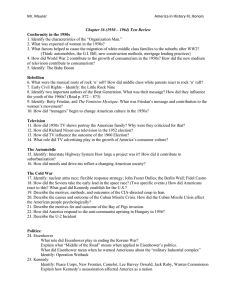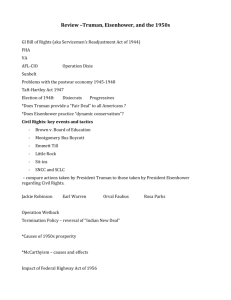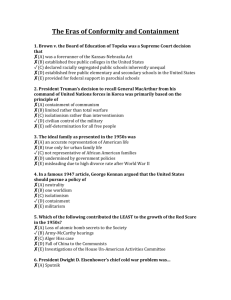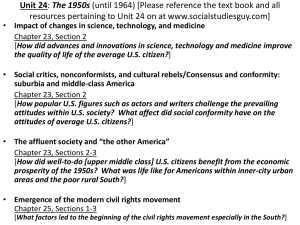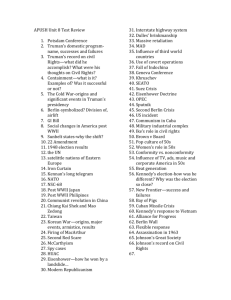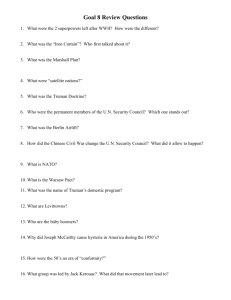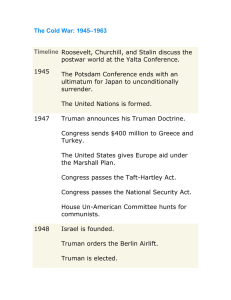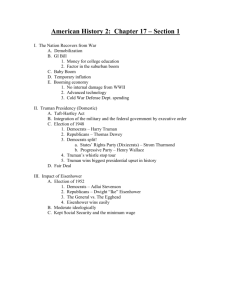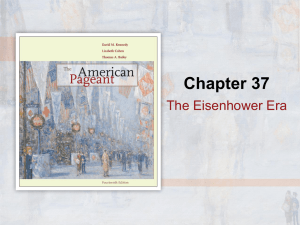Unit 8: Social Transformations Following World War II (1945 – 1990s
advertisement
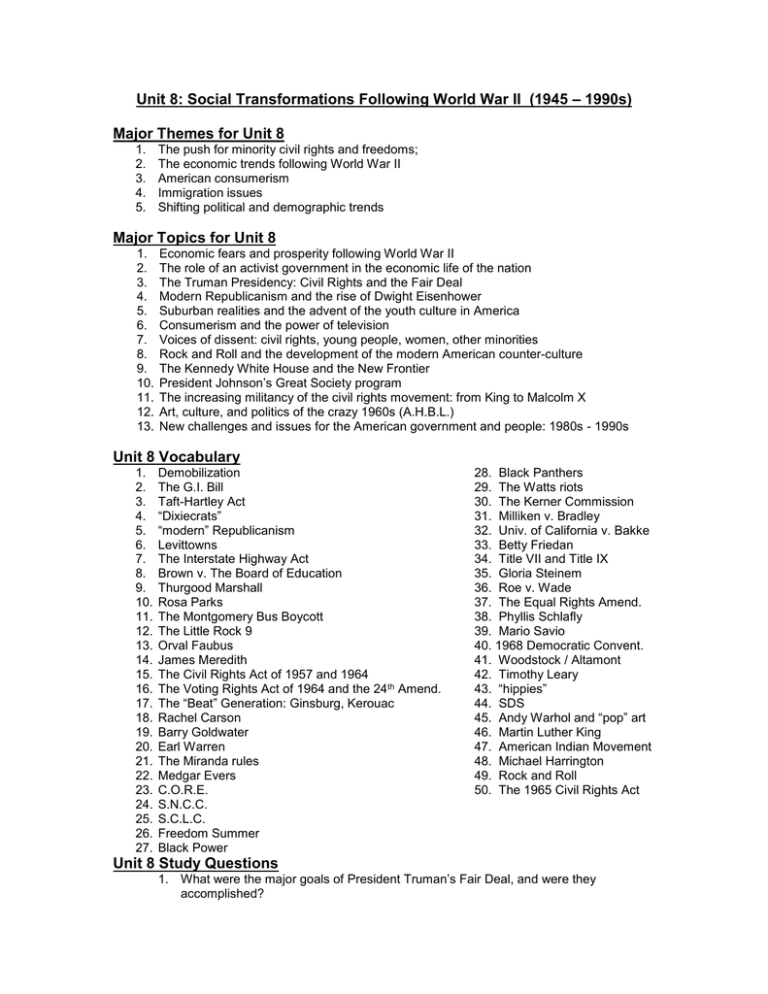
Unit 8: Social Transformations Following World War II (1945 – 1990s) Major Themes for Unit 8 1. 2. 3. 4. 5. The push for minority civil rights and freedoms; The economic trends following World War II American consumerism Immigration issues Shifting political and demographic trends Major Topics for Unit 8 1. 2. 3. 4. 5. 6. 7. 8. 9. 10. 11. 12. 13. Economic fears and prosperity following World War II The role of an activist government in the economic life of the nation The Truman Presidency: Civil Rights and the Fair Deal Modern Republicanism and the rise of Dwight Eisenhower Suburban realities and the advent of the youth culture in America Consumerism and the power of television Voices of dissent: civil rights, young people, women, other minorities Rock and Roll and the development of the modern American counter-culture The Kennedy White House and the New Frontier President Johnson’s Great Society program The increasing militancy of the civil rights movement: from King to Malcolm X Art, culture, and politics of the crazy 1960s (A.H.B.L.) New challenges and issues for the American government and people: 1980s - 1990s Unit 8 Vocabulary 1. 2. 3. 4. 5. 6. 7. 8. 9. 10. 11. 12. 13. 14. 15. 16. 17. 18. 19. 20. 21. 22. 23. 24. 25. 26. 27. Demobilization The G.I. Bill Taft-Hartley Act “Dixiecrats” “modern” Republicanism Levittowns The Interstate Highway Act Brown v. The Board of Education Thurgood Marshall Rosa Parks The Montgomery Bus Boycott The Little Rock 9 Orval Faubus James Meredith The Civil Rights Act of 1957 and 1964 The Voting Rights Act of 1964 and the 24th Amend. The “Beat” Generation: Ginsburg, Kerouac Rachel Carson Barry Goldwater Earl Warren The Miranda rules Medgar Evers C.O.R.E. S.N.C.C. S.C.L.C. Freedom Summer Black Power 28. Black Panthers 29. The Watts riots 30. The Kerner Commission 31. Milliken v. Bradley 32. Univ. of California v. Bakke 33. Betty Friedan 34. Title VII and Title IX 35. Gloria Steinem 36. Roe v. Wade 37. The Equal Rights Amend. 38. Phyllis Schlafly 39. Mario Savio 40. 1968 Democratic Convent. 41. Woodstock / Altamont 42. Timothy Leary 43. “hippies” 44. SDS 45. Andy Warhol and “pop” art 46. Martin Luther King 47. American Indian Movement 48. Michael Harrington 49. Rock and Roll 50. The 1965 Civil Rights Act Unit 8 Study Questions 1. What were the major goals of President Truman’s Fair Deal, and were they accomplished? 2. What was suburban life like during the 1950s? 3. What problems did the Great Society Programs address? 4. How were the 1950s not what it seemed in terms of conformity and traditional American values? 5. Contrast the national agendas of President Kennedy and President Eisenhower. 6. What did the Supreme Court do to secure the rights of those accused of crimes? 7. How did President Truman avoid an economic depression after World War II? 8. What steps were taken in the 1960s to ensure environmental safeguards? 9. How did Presidents Truman and Eisenhower respond to racism and segregation? 10. How did President Johnson carry on after the death of President Kennedy? 11. What was the Warren Commission and what were its findings? 12. What were the different approaches to civil rights from the 1950s through the 1970s? 13. What prevented the Civil Rights movement from unifying into a single, integrated movement? 14. What were some of the scientific and technological realities in the 1970s, 1980s, and 1990s which influenced major social, economic, and political issues in the United States? 15. What were (are) some of the debates regarding the proper role of the American government in the affairs of the American people?

